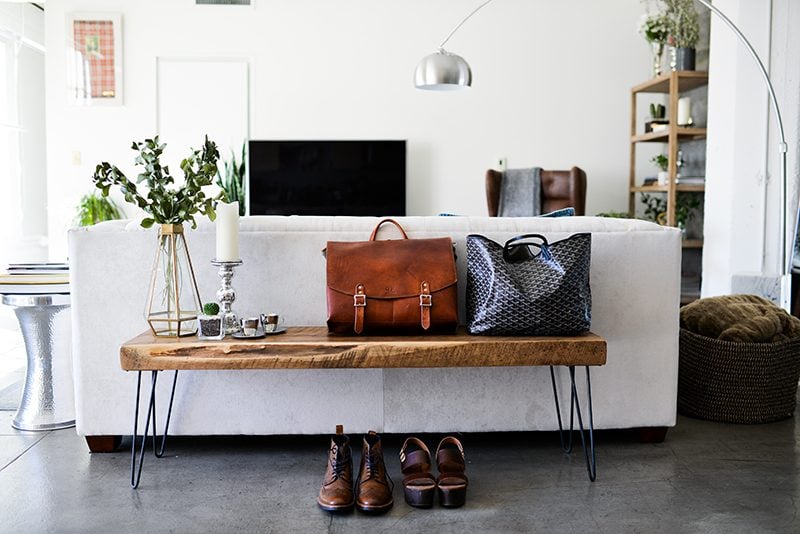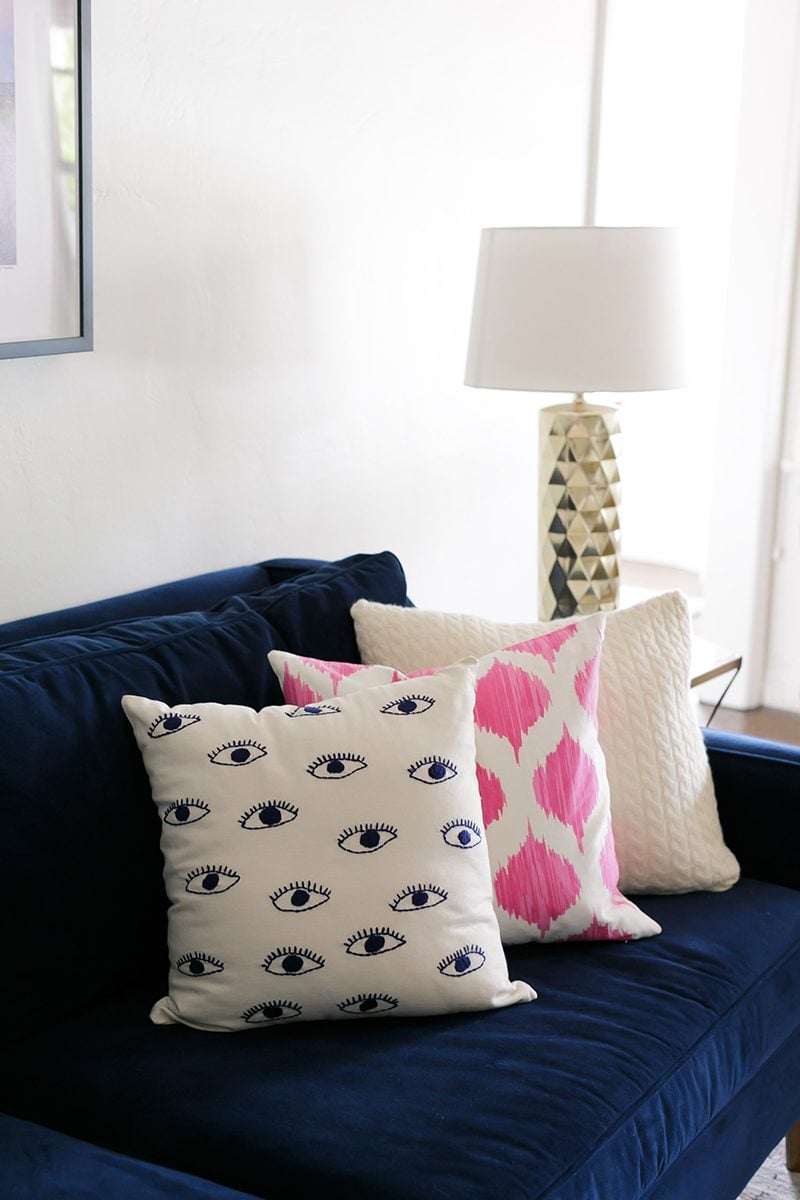Havenly designer Lauren Cox has shared her insights into the power of interior design, how to use color, how to configure a balanced room, and tips and tricks to master scale and proportion. Today, she will cover the final principal of interior design: rhythm and repetition.
Rhythm and repetition is the idea of creating movement and harmony throughout your space with recurring patterns, colors, and different elements. Rhythm is how well you execute repetition. A space that has steady rhythm and repetition will lead the eye around the room seamlessly.
To achieve repetition, everything doesn’t need to be one color. Just as you shouldn’t repeat only one texture or material. Instead, you should have a balance of similar and different elements to keep the space interesting while maintaining cohesion. Repetition should occur in various places around the room, such as polka dot pattern on an accent pillow and repeating that pattern on the opposite side of the room with a piece of artwork.
Repetition doesn’t have to be so obvious. You can repeat materials like leather and wood throughout a design. Additionally, you can repeat patterns that are similar but not exact replicas to add visual variety and maintain harmony. As Lauren mentioned when she spoke about balance, you can also create repetition through symmetry.

Embrace Variety
Once you master incorporating and staggering the same pattern or color throughout a room, you can start to think of rhythm and repetition like a professional interior designer does. Rather than repeat the same elements continuously, try incorporating one color in a variety of shades. Or, use patterns on different scales, for example on a big wall and a small pillow. This helps create a sense of similarity and cohesion.
Mixing Patterns and Colors
Mixing patterns and colors is another great strategy professionals use. A general guideline to mixing patterns is remembering the rule of three. Use a solid, neutral piece as your base and then pair it with a larger pattern such as a large floral and top it off with a third item with a small-scale pattern like a pinstripe or small polka dots. Mixing two patterns won’t give you enough variety–it may even appear as though you’ve two mismatched patterns. By introducing a third pattern, you create a sense of harmony.

Similar to the other principles, start with smaller items and accessories to practice. Identify a pattern you like and work to incorporate it into your space by creating a pillow or art collection. Take it a step further and incorporate multiple motifs. Floral prints and geometric patterns are one of Lauren’s favorite pattern combinations because of the visual contrast.
The easiest way to identify where you already have repetition is by looking for trends across your current pieces. Lauren recommends gathering small items like accessories, artwork, and pillows in one space to see where if there are similar colors or textures. If there isn’t any noticeable repetition, start looking for new pieces to add to your collection that are similar to what you own. Once you have all your items, disperse them throughout the room to create rhythm in the space. This exercise will give you an idea of the patterns you’re naturally drawn to as well as present opportunities for you to interject new schemes or colors.
Lauren compiled even more resources in her free Skillshare class that you can download for free. Now that you’ve learned about each principle of interior design, it’s time to pull everything together. Ready to exercise these ideas in terms of your personal style? Stay tuned for the next blog post.

